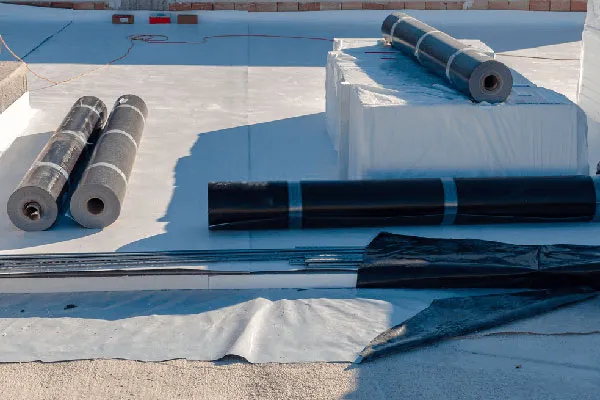Waterproofing is the process of making an object or structure waterproof or water-resistant so that it remains relatively unaffected by water or resisting the ingress of water under specified conditions. Such items may be used in wet environments or underwater to specified depths. Water resistant and waterproof often refer to penetration of water in its liquid state and possibly under pressure, whereas damp proof refers to resistance to humidity or dampness.
There are various kinds of materials used for waterproofing, given below below is a guide to different types of materials used in waterproofing
Polyurethanes
Polyurethanes are formed by reacting a polyol (an alcohol with more than two reactive hydroxyl groups per molecule) with a diisocyanate or a polymeric isocyanate in the presence of suitable catalysts and additives. Because a variety of diisocyanates and a wide range of polyols can be used to produce polyurethane, a broad spectrum of materials can be produced to meet the needs of specific applications.
Polyurethane (PUR and PU) is a polymer composed of organic units joined by carbamate (urethane) links. While most polyurethanes are thermosetting polymers that do not melt when heated, thermoplastic polyurethanes are also available. Polyurethane polymers are traditionally and most commonly formed by reacting a di- or triisocyanate with a polyol. Since polyurethanes contain two types of monomers, which polymerise one after the other, they are classed as alternating copolymers. Both the isocyanates and polyols used to make polyurethanes contain, on average, two or more functional groups per molecule. Polyurethanes are used in the manufacture of high-resilience foam seating, rigid foam insulation panels, microcellular foam seals and gaskets, durable elastomeric wheels and tires (such as roller coaster, escalator, shopping cart, elevator, and skateboard wheels), automotive suspension bushings, electrical potting compounds, high-performance adhesives, surface coatings and sealants, synthetic fibers, carpet underlay, hard-plastic parts etc. The main ingredients to make a polyurethane are di- and tri-isocyanates and polyols. Other materials are added to aid processing the polymer or to modify the properties of the polymer.

Cementitious coating
Cementitious coating refers to a coating that contains Portland cement as one of its components and is held on the surface by a binder. A cementitious coating provides corrosion resistance to substrates; for example, steel is protected from corrosion by maintaining the pH level above 4.0 at the metal/coating interface because steel corrodes at a lower rate in this pH range. Cementitious coating is a two component, thixotropic, cementitious modified polymer coating. This coating provides high adhesion to both concrete and steel. This coating provides protection from the effects of aggressive acid gases, moisture and chlorides and also resists chemical attack on the concrete or other substrates. This coating forms a highly elastic hard and alkaline coating on the substrate. Cementitious coating protects concrete in sulfate contaminated ground conditions.
Cementitious coating is useful for internal and external structural waterproofing of concrete and other mineral substrates. It is also useful for underground structures as well as roofs and decks. Cementitious coating can protect highways and coastal structures from a chlorides environment and enhance the durability of reinforced concrete.
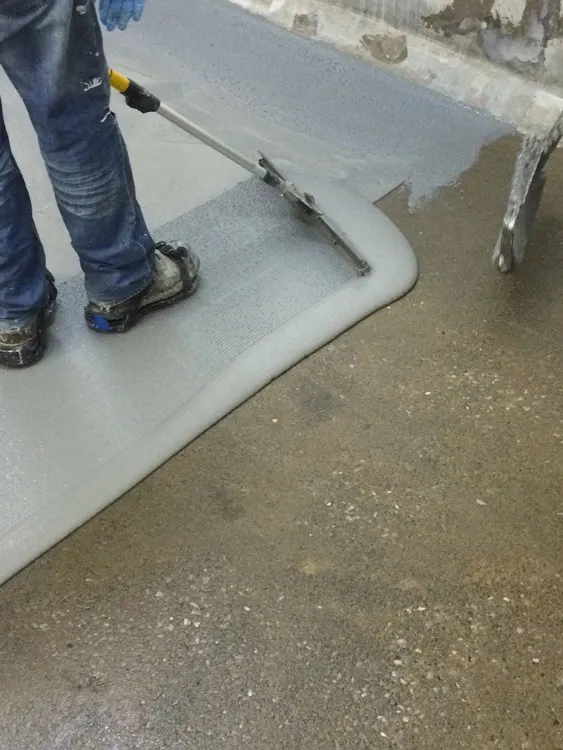
EPDM rubber
EPDM rubber (ethylene propylene diene monomer rubber) is a type of synthetic rubber that is used in many applications. EPDM is an M-Class rubber under ASTM standard D-1418; the M class comprises elastomers having a saturated chain of the polyethylene type (the M deriving from the more correct term polymethylene). EPDM is made from ethylene, propylene, and a diene comonomer that enables crosslinking via sulphur vulcanisation. The earlier relative of EPDM is EPR, ethylene-propylene rubber, that contains no diene units and can only be crosslinked using radical methods such as peroxides. Dienes used in the manufacture of EPDM rubbers are ethylidene norbornene (ENB), dicyclopentadiene (DCPD), and vinyl norbornene (VNB). EPDM is derived from polyethylene into which 45-85 wt% of propylene have been copolymerised to reduce the formation of the typical polyethylene crystallinity.
EPDM is a semi-crystalline material with ethylene-type crystal structures at higher ethylene contents, becoming essentially amorphous at ethylene contents that approach 50 wt%. Rubbers with saturated polymer backbones, such as EPDM, have much better resistance to heat, light and ozone than unsaturated rubbers such as natural rubber, SBR or polychloroprene (Neoprene). As such, EPDM can be formulated to be resistant to temperatures as high as 150°C, and, properly formulated, can be used outside for many years or decades without degradation. EPDM has good low temperature properties, with elastic properties to temperatures as low as -40°C depending on the grade and the formulation. A roll of EPDM flashing with fleece on the back, used for waterproofing roofs As with most rubbers, EPDM is always used compounded with fillers such as carbon black and calcium carbonate, with plasticisers such as paraffinic oils, and has useful rubbery properties only when crosslinked. Crosslinking mostly takes place via vulcanisation with sulphur, but is also accomplished with peroxides (for better heat resistance) or with phenolic resins. High energy radiation such as from electron beams is sometimes used for producing foams and wire and cable.
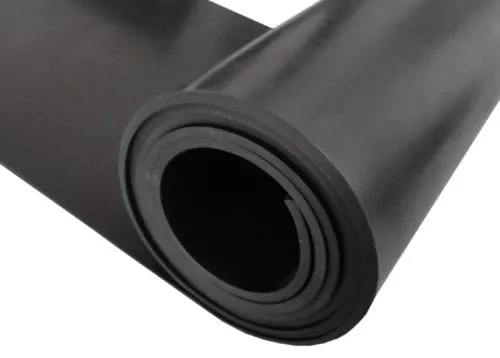
Bitumen
Bituminous waterproofing systems are designed to protect residential and commercial buildings. Bitumen (asphalt or coal-tar pitch) is a mixed substance made up of organic liquids that are highly sticky, viscous, and waterproof. These systems are sometimes used to construct roofs, in the form of roofing felt or roll roofing products.
The primary use (70%) of bitumen is in road construction, where it is used as the glue or binder mixed with aggregate particles to create asphalt concrete. Its other main uses are for bituminous waterproofing products, including production of roofing felt and for sealing flat roofs.Bitumen properties change with temperature, which means that there is a specific range where viscosity permits adequate compaction by providing lubrication between particles during the compaction process. Low temperature prevents aggregate particles from moving, and the required density is not possible to achieve.
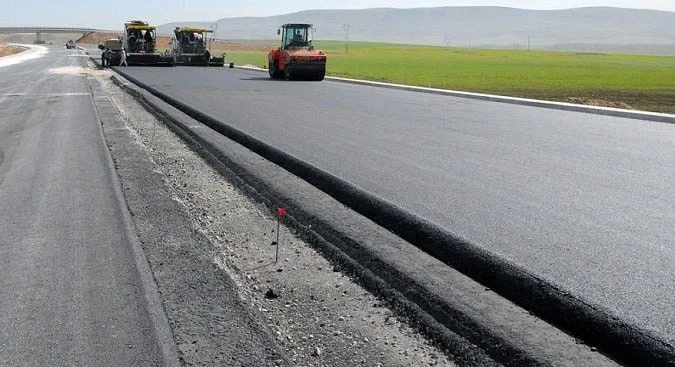
Roofing felt
Roofing felt (similar to tar paper) is the base material used to make roof shingles and roll roofing. Used for decades as waterproof coverings in residential and commercial roofs, these bitumen compositional membranes incorporate two layers. The first underside polymer membrane is used as a solid background, often reinforced with glass fibers. Mineral granules make up the self-protective top layer, with a final bituminous mixture encapsulating them both. Typical uses of felt paper are as an underlay(ment) (sarking) beneath other building materials, particularly roofing and siding materials, and is one type of membrane used in asphalt built up roofing (BUR) systems. The purposes are to “…separate the roof covering from the roof deck…shed water…[and] provide secondary weather protection…” Also, the rapid application of roofing underlay protects the roof deck during construction until the roofing material is applied and is required for roofs required to meet Underwriters Laboratory (UL) fire ratings. The separation of the roof covering from the roof deck protects the roof covering from resins in some sheathing materials and cushions unevenness and old nails and splinters in re-roofing applications. The underlayment also sheds water, which penetrates the roof covering from an ordinary leak, a leak from wind-driven rain or snow, wind damage to the roof covering, or ice dams. However, the application of underlays may increase the roof temperature, which is the leading cause of ageing of asphalt shingles and felt paper wrinkles when it gets wet, which (rarely) shows through asphalt shingles. Not installing an underlay may void the roof covering warranty.
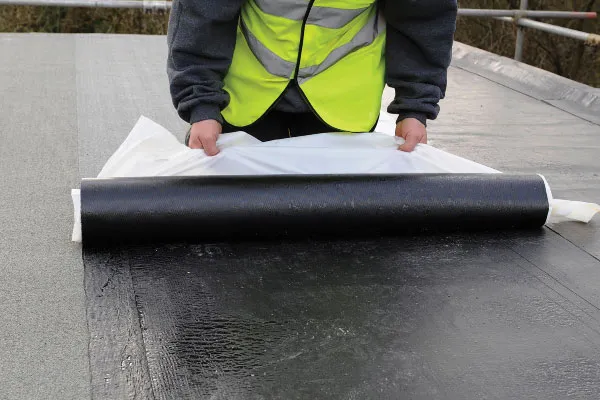
Mastic Asphalt
Mastic asphalt (MA) is a dense mixture consisting of coarse aggregate, and/or sand, and /or limestone fine aggregate, and/or filler and bitumen, which may contain additives (for example polymers, waxes). The mixture is designed to be of low void content. The binder content is so adjusted that the voids are completely filled and that even a slight excess of binder may occur. Mastic asphalt is pourable and able to be spread in its working temperature condition. It requires no compaction on site.
Its durability and seamless application means that it is one of the few membranes able to handle consistent heavy foot and vehicular traffic, including from Heavy Goods Vehicles, and still maintain its waterproof integrity. With no application too tricky, it is also easy to repair should alterations or damage occur. Another major advantage with mastic asphalt is that it can be laid at speed, reducing the project costs significantly. It also cools very rapidly, allowing foot traffic within two to three hours, depending upon ambient temperature.
Providing such excellent wear against the extremes of weather – and with a life expectancy of 50 years and more – the waterproof membrane is fast becoming the material of choice for a manner of different buildings including, schools, offices, shopping centres, hotels and even churches.

Thermoplastic
A thermoplastic, or thermosoftening plastic, is a plastic polymer material that becomes pliable or moldable at a certain elevated temperature and solidifies upon cooling. Most thermoplastics have a high molecular weight. The polymer chains are associated by intermolecular forces, which weaken rapidly with increased temperature, yielding a viscous liquid. In this state, thermoplastics may be reshaped and are typically used to produce parts by various polymer processing techniques such as injection molding, compression molding, calendering, and extrusion. Thermoplastics differ from thermosetting polymers (or “thermosets”), which form irreversible chemical bonds during the curing process. Thermosets do not melt when heated, but typically decompose and do not reform upon cooling.
Waterproof TPU fabrics bond a thermoplastic polyurethane membrane to a base textile, such as nylon or polyester fabric, to create a wide range of high-performing materials that maintain their flexibility yet are durable and waterproof.
TPU has a long list of excellent material properties. It is abrasion resistant, tear resistant, has excellent bending and tensile strength, large elongation break, low temperature resistance, low long-term deformation rate, and is resistant to chemicals, ozone, oxygen, oil, and fuel. TPU fabrics maintain the base materials flexibility and softness, too. These characteristics combine to produce technical textiles that withstand extensive wear and environmental stressors across hundreds of applications. TPU coated textiles are UV resistant, can stand up to extreme weather and environmental conditions, and resist abrasions and punctures. Combined with glued or welded seals, these fabrics have excellent air- and liquid-holding capability.
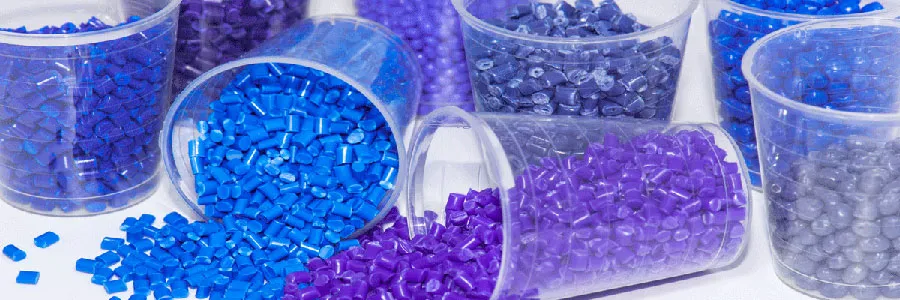
Sheet waterproofing membrane
As the name implies, these are membranes that arrive at the site in the form of rolls. These are then unfurled and laid on a firm surface. The most common type of sheet based membrane is a bituminous waterproofing membrane. This type of membrane is stuck to the substrate with a hot tar based adhesive using blowtorches.
Joints between adjacent membranes are also made with the same hot adhesive. The sheets are overlapped by about 100mm (4″) to form a waterproof joint. Some membranes are even joined by melting them with a hot air gun and then overlapping them on the previously laid sheet. With this type of membrane, joints between sheets are critical, and must be done perfectly to avoid leakage.
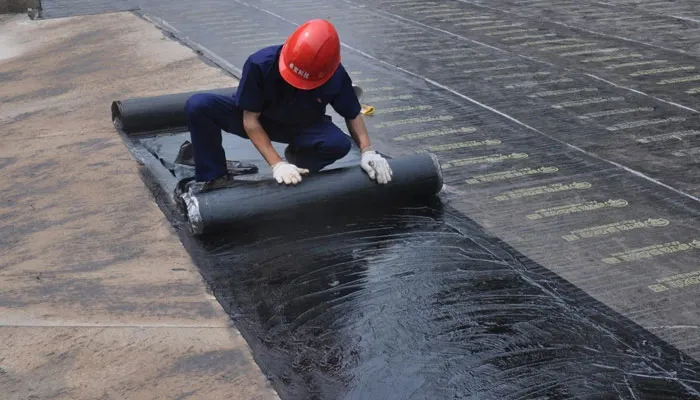
PVC waterproofing membrane
The polyvinyl-chloride (PVC) waterproofing volume material is one performance outstanding high quality, joins processing assistants and so on plasticizer, anti-ultraviolet ray medicinal preparation , anti-aged medicinal preparation, stabilizer after the PVC resin, through squeezes out the law production formation the high polymer waterproofing volume material. Because this product has used the unique product formula, the product life has far exceeded the general waterproofing material, the entire waterproofing system life is long, the roofing surpasses for 30 years, underground surpasses for 50 years, in the construction, the civil engineering obtains the widespread application.
PVC waterproofing membrane is a modern roofing material, which is made of high quality flexible (plasticized) polyvinyl chloride.Depending on the application area there are reinforced and unreinforced membranes. Reinforced waterproofing membrane has a reinforcing base in the form of polyester mesh or glass fiber and it is used for waterproofing of roofs. Reinforced membranes have increased durability. Unreinforced membranes are more flexible, have high tear resistance and are used for waterproofing of underground structures, tunnels, swimming pools. Among the features of PVC waterproofing membrane its vapor permeability should be highlighted. Due to this characteristic the material can let moisture out of the roof space of the building.

Liquid applied membranes
Liquid applied membranes come to the site in liquid form, which are then either sprayed or brush-applied on the surface. The liquid cures in the air to form a seamless, joint-free membrane. The thickness can be controlled by applying more of the liquid chemical per unit area.Since the application procedure is very quick, a contractor will try and finish the entire area to be waterproofed in a single day to avoid cold joints. However, if a very large area is to be done on successive days, cold joints can easily be done by overlapping the new membrane over the old – the chemical will stick to itself readily.
These are generally considered to be superior to sheet based membranes as they are joint-free. However care must be taken in application to provide just the right thickness. The membrane can tear or break if it is too thin. The adhesion of the membrane to concrete must be good. If a concrete screed (layer) is to be applied over a waterproofing membrane, the membrane is made rough by sand broadcasting. This is throwing a thin layer of sand by hand over the wet membrane (before it has set fully) so that the sand sticks to the membrane and provides a rough surface the concrete can adhere to.

Conclusion
Waterproofing in building construction is the process of making a structure water-resistant or impervious to the ingress of water. Waterproofing is essential as it prevents water from penetrating buildings and helps to keep the interior areas dry. Choose the material that fulfills your project need. Hope this guide to different types of materials used in waterproofing is usefull for you.
Image and info:
wtrproof.com, polyurethanes.org, rpbuilders.co.in, zenithrubberstore.com, roof-stores.co.uk, riogroup.co.uk, plasticseurope.org, teletype.in, kenresearch.com, houseunderconstruction.com
